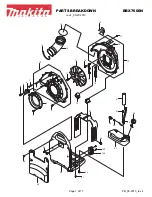
163
GLOSSARY
Frequency —
Rate of AC signal alternation, defined in Hertz (cycles per
second).
Full Duplex —
Transmission of data in both directions at the same time.
Gateway —
A device that interconnects two or more networks that may use
different protocols and media.
Hertz (Hz) —
Unit of measure for frequency in cycles per second (cps).
Horizontal Cable —
The part of a building’s cabling that extends from
and includes the telecommunications outlet in the work area to the
telecommunications (IDF) closet on the same floor.
Hub —
A piece of LAN equipment that allows multiple network devices to
be connected to the network cabling system through a central point. Also
called a concentrator.
I/O —
Input/Output.
IDF (Intermediate Distribution Frame) —
The distribution point where
vertical backbone cable is connected to the horizontal cables.
IEEE —
Institute of Electrical and Electronic Engineers.
Impedance —
A frequency-dependent parameter defined by the ratio
of the AC Voltage to Current across a circuit element.
Impulse Noise —
Non-repetitive electrical spikes or pulses caused by
external electromagnetic fields.
Inductance —
The ability to store a magnetic field across a conductor
measured in Henries (H).
Insulation —
A non-conductive material used to isolate conductor surfaces.
Internetworking —
Communication among devices across multiple
networks.
ISO —
International Organization for Standardization.
Jabber —
A network fault condition where one station is continuously trans-
mitting or transmits illegal packets of length greater than 20 milliseconds.
Summary of Contents for SCAN-LAN VI
Page 2: ......








































